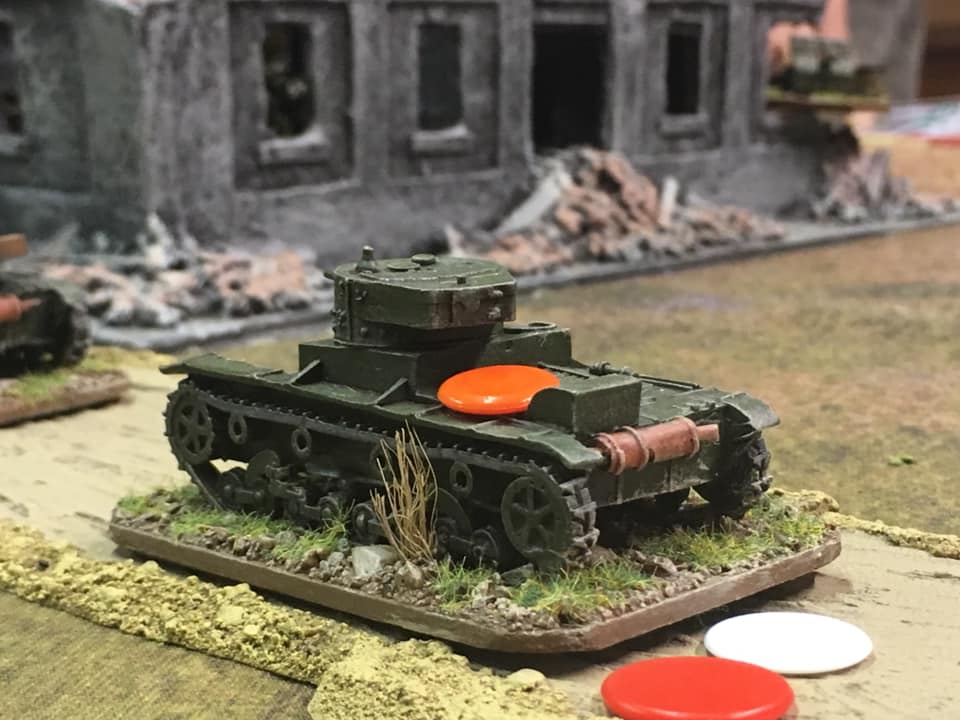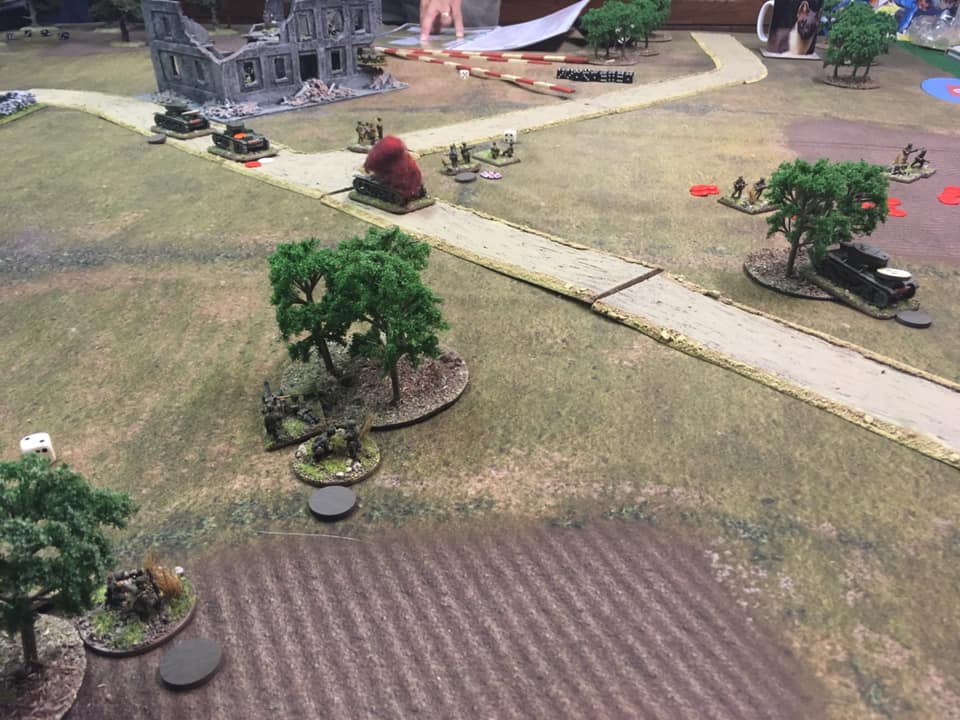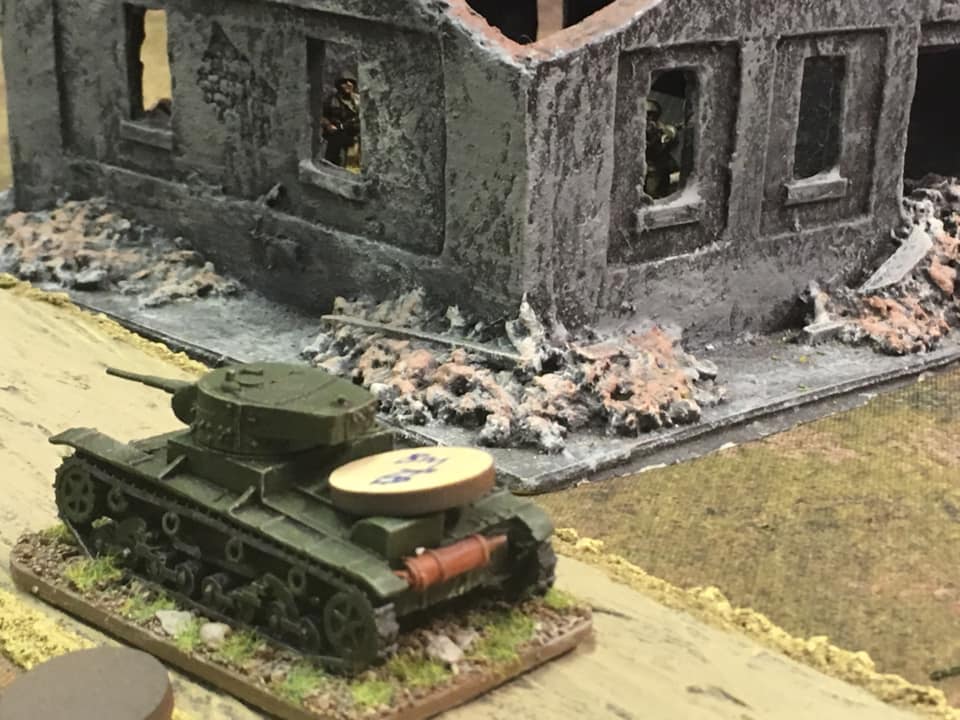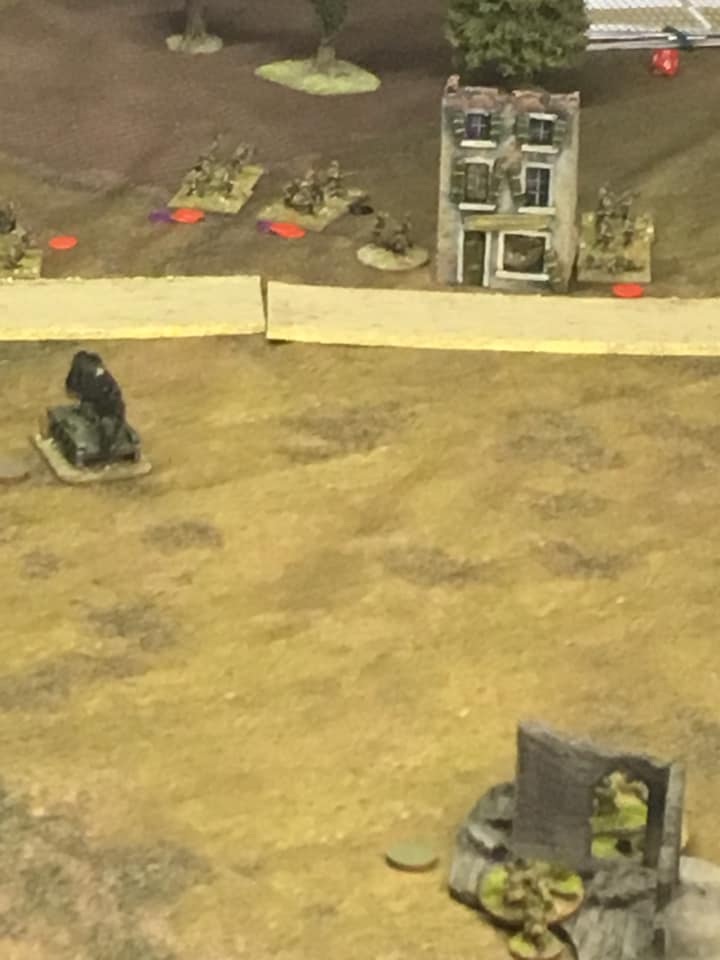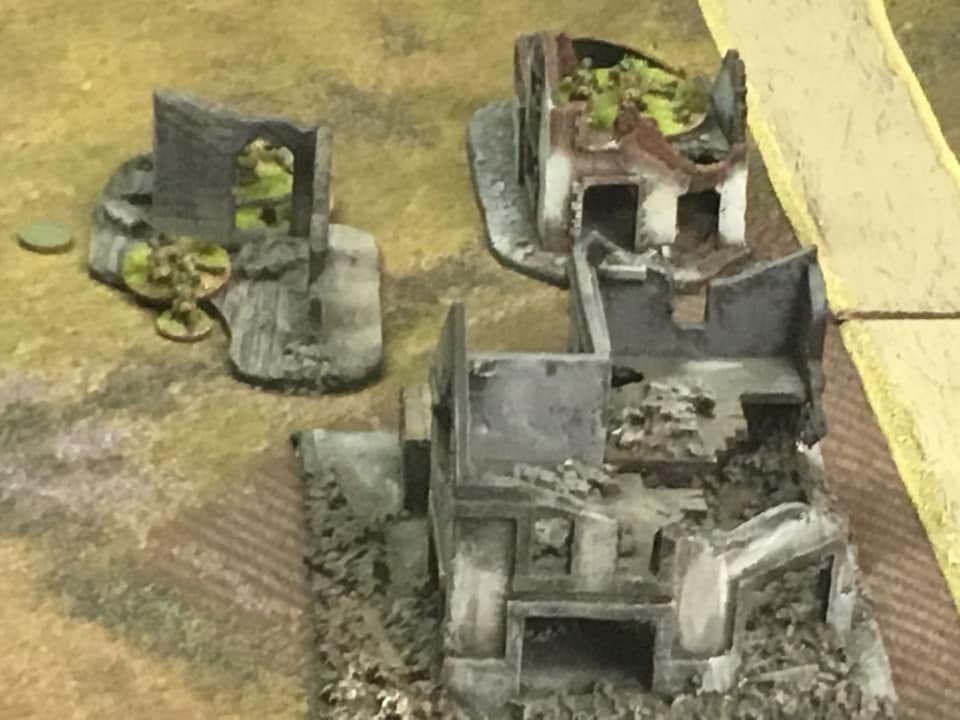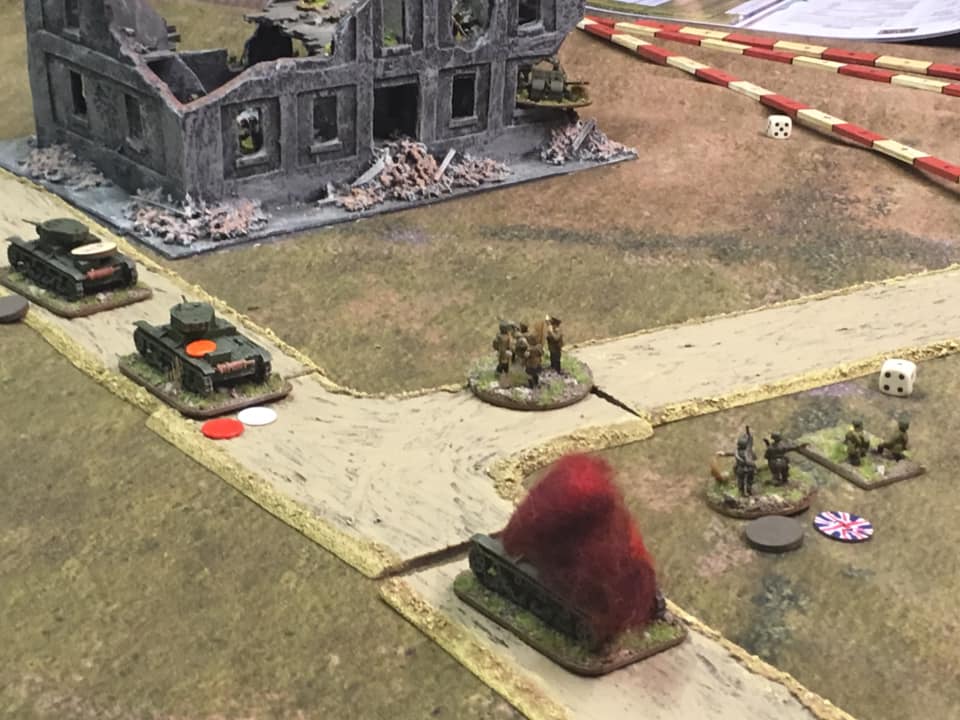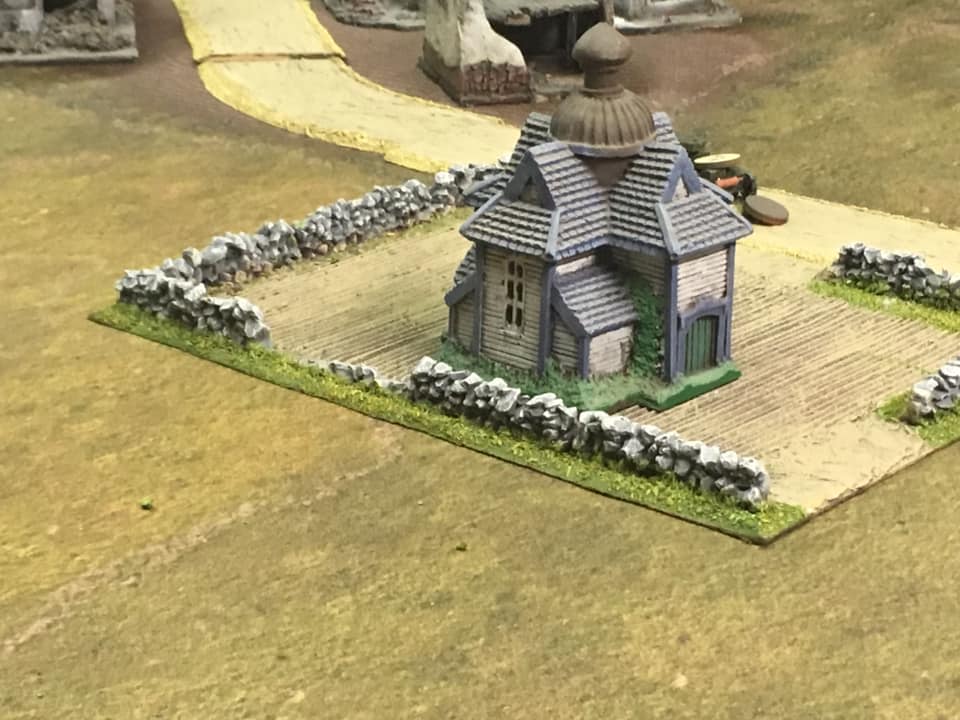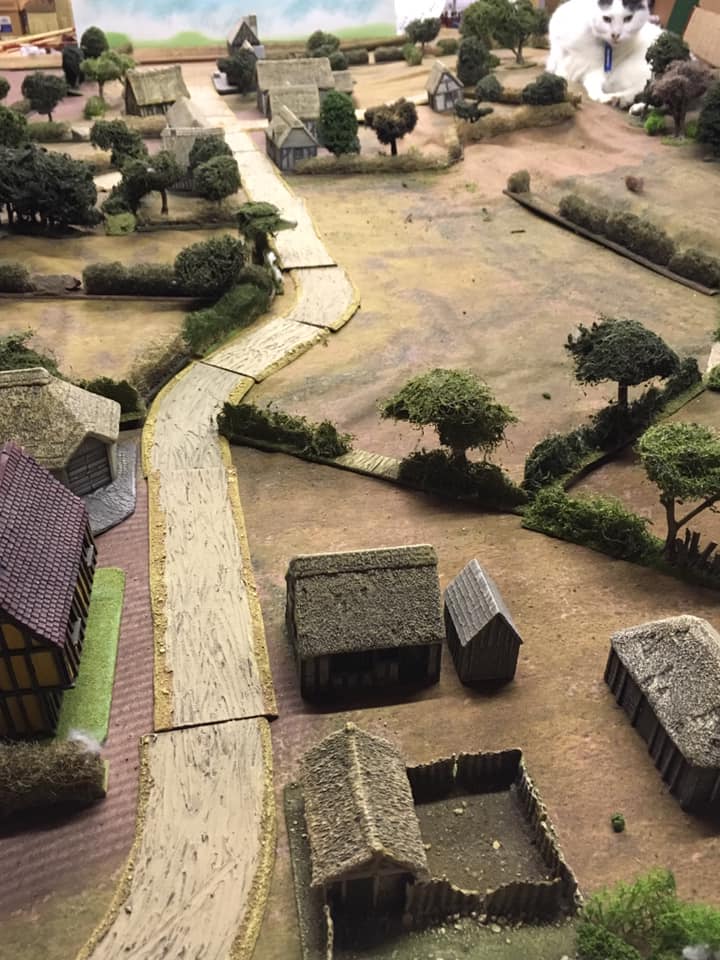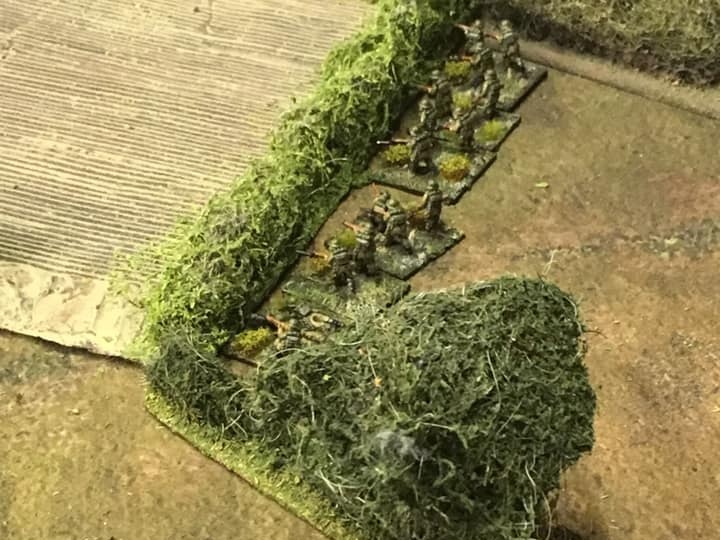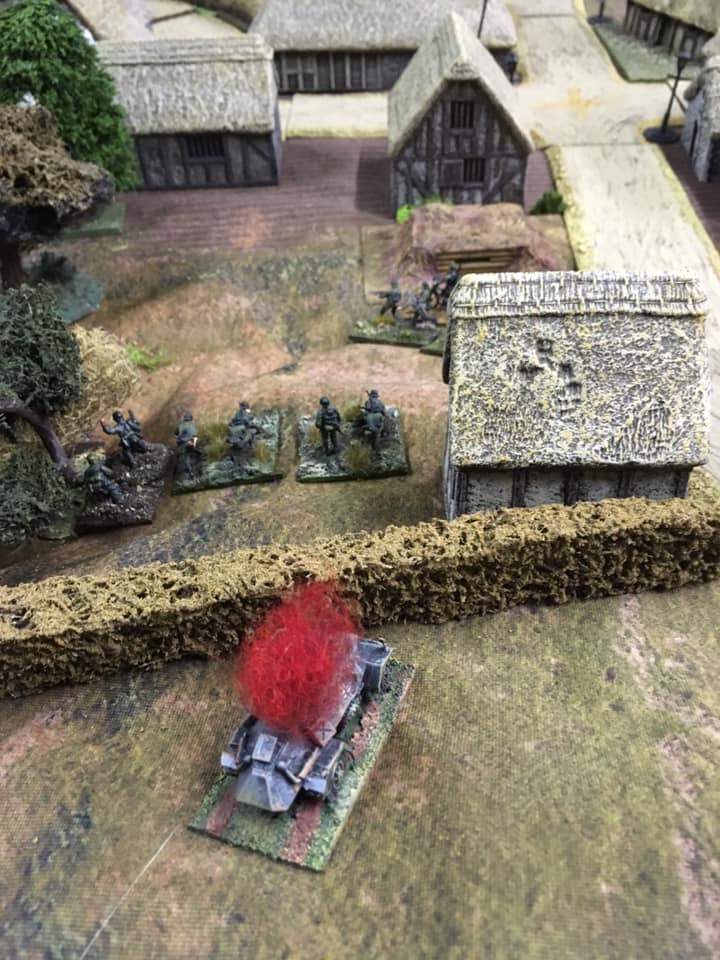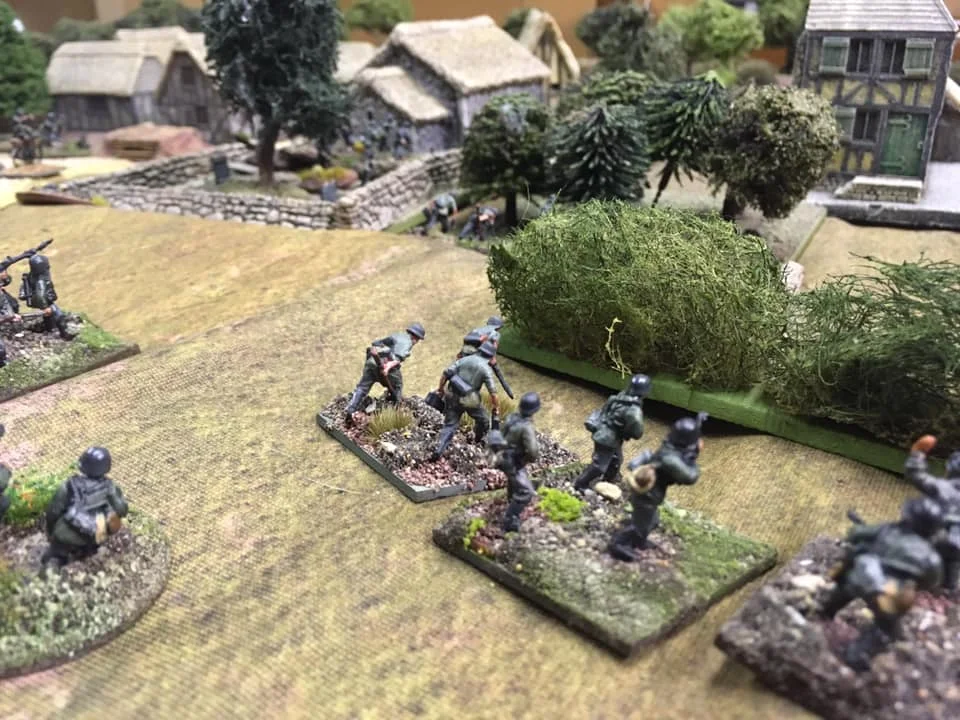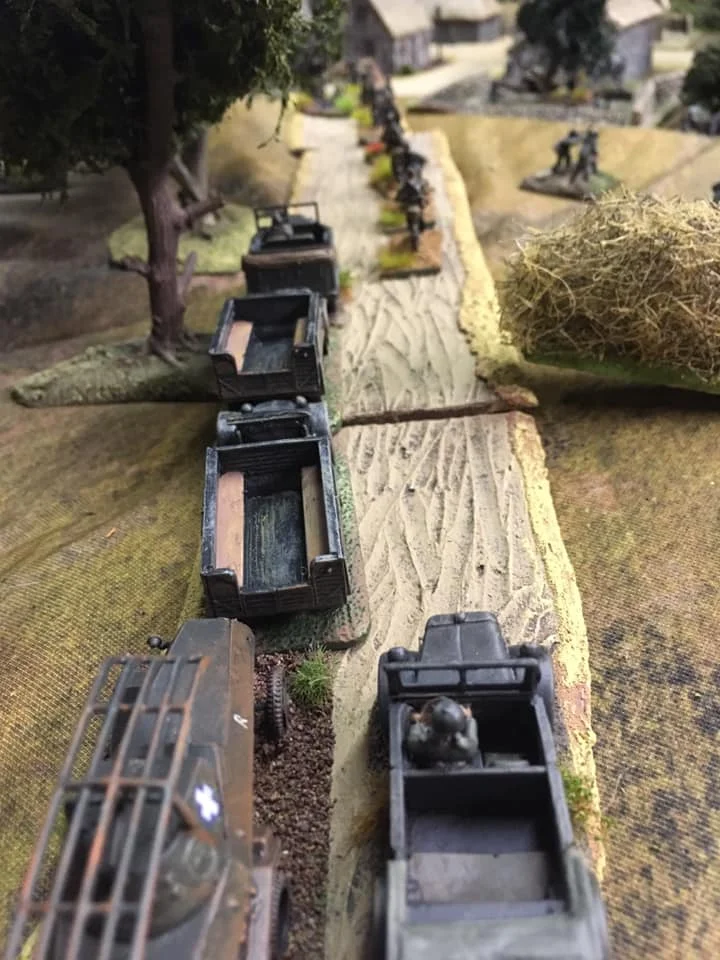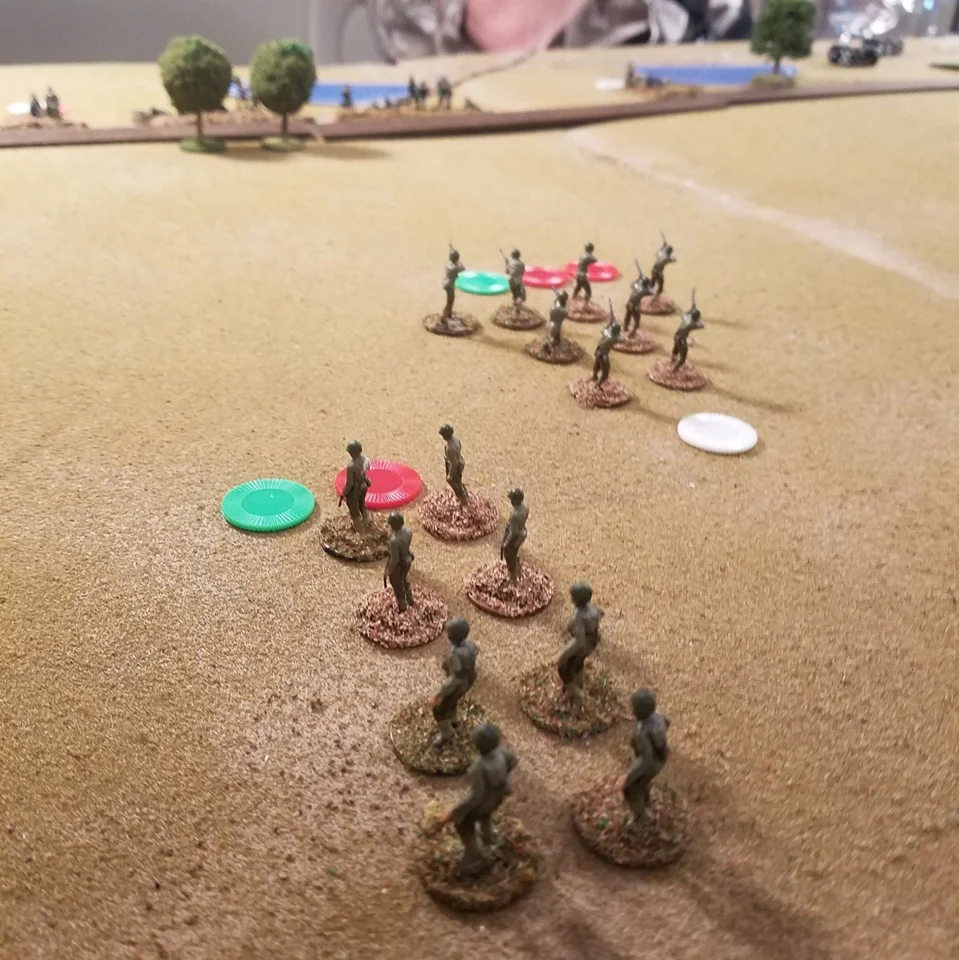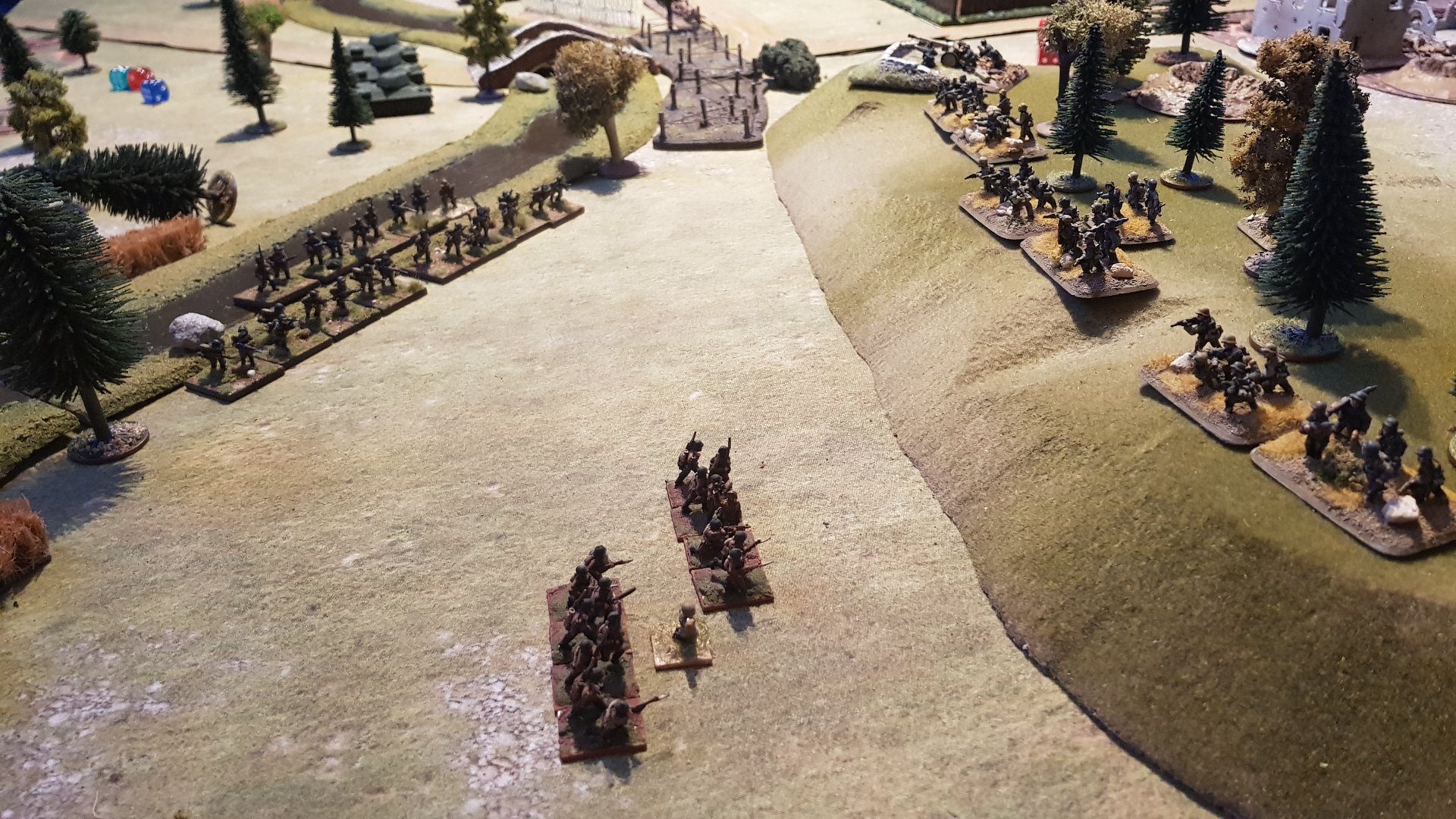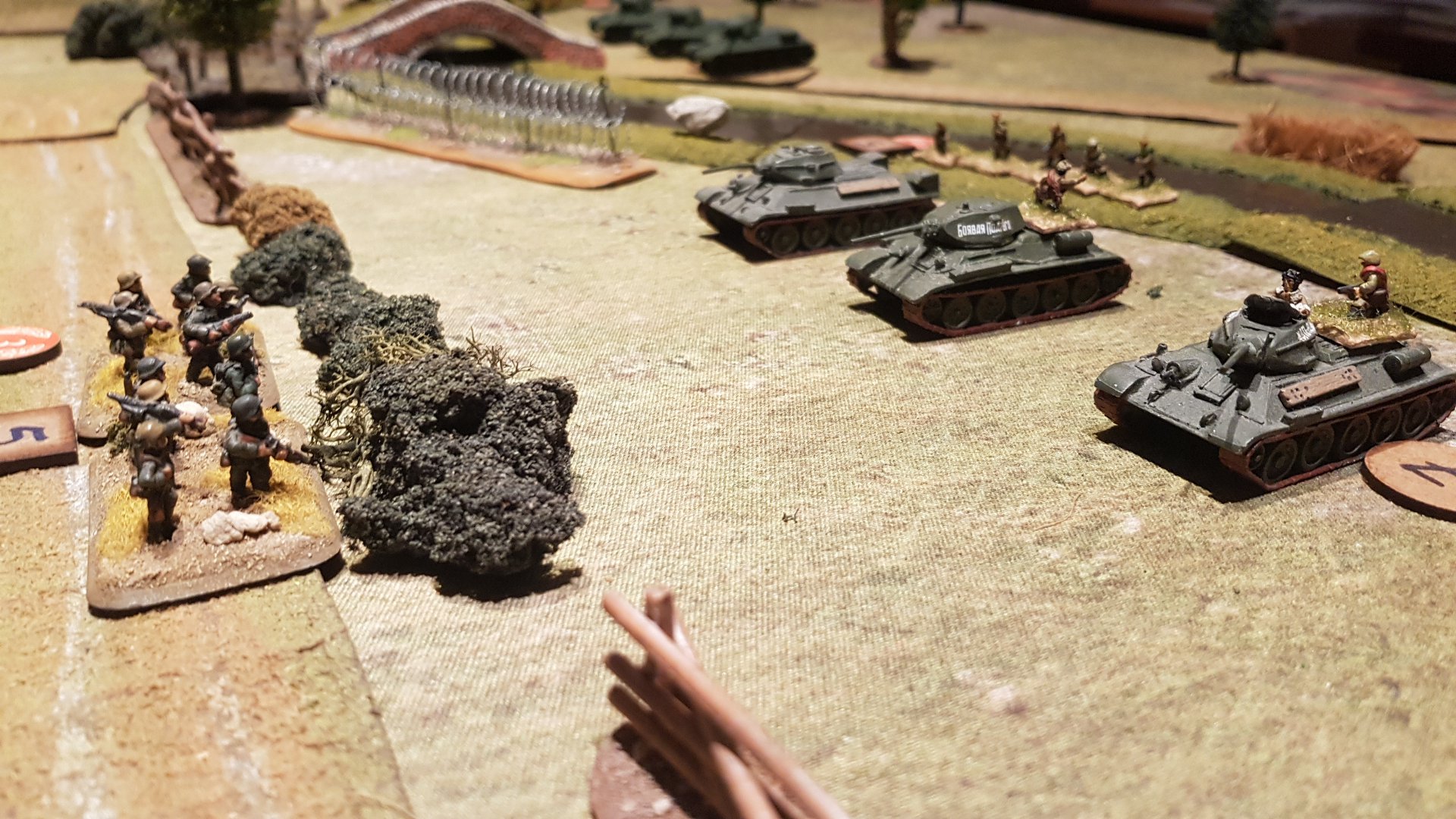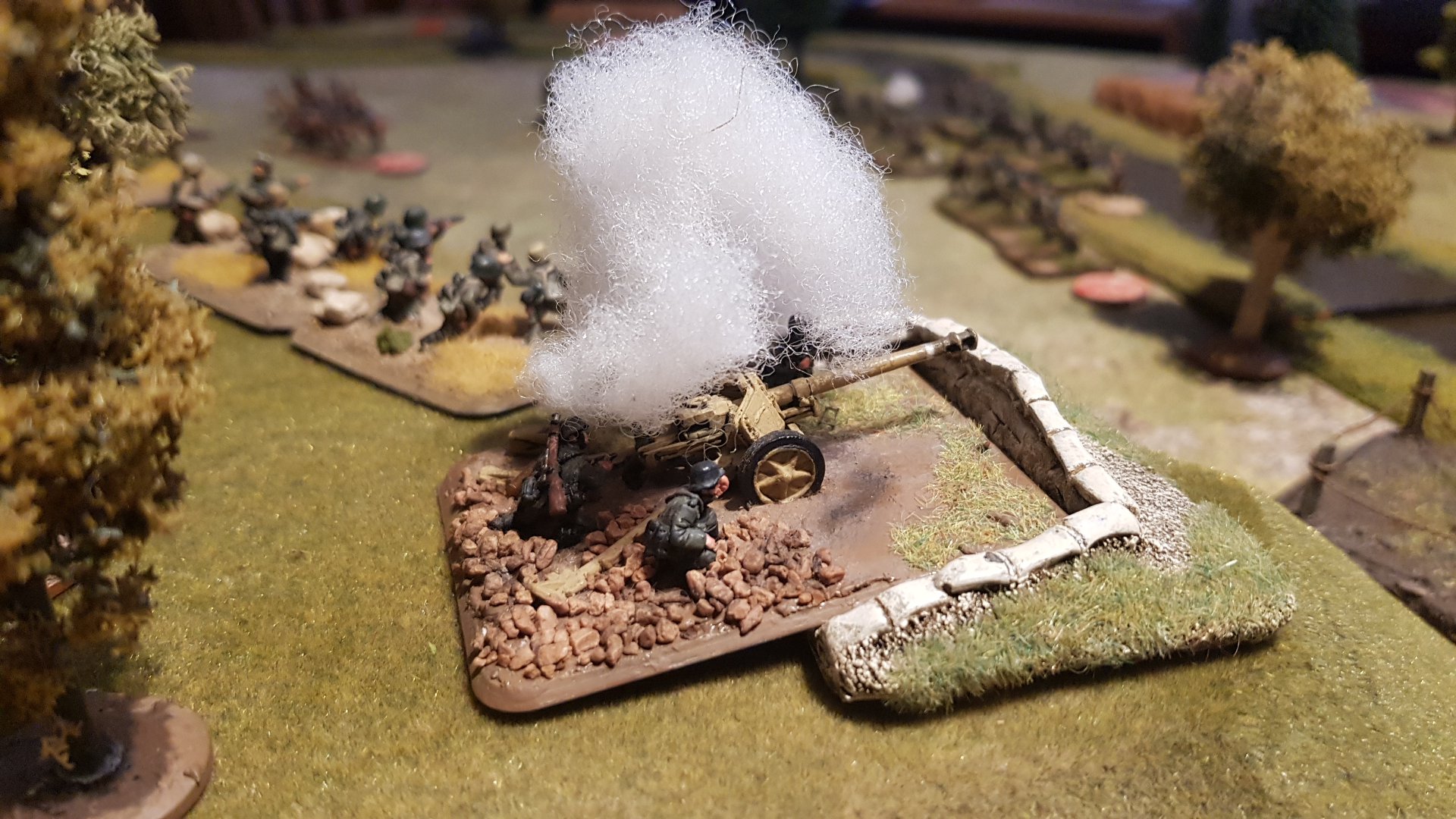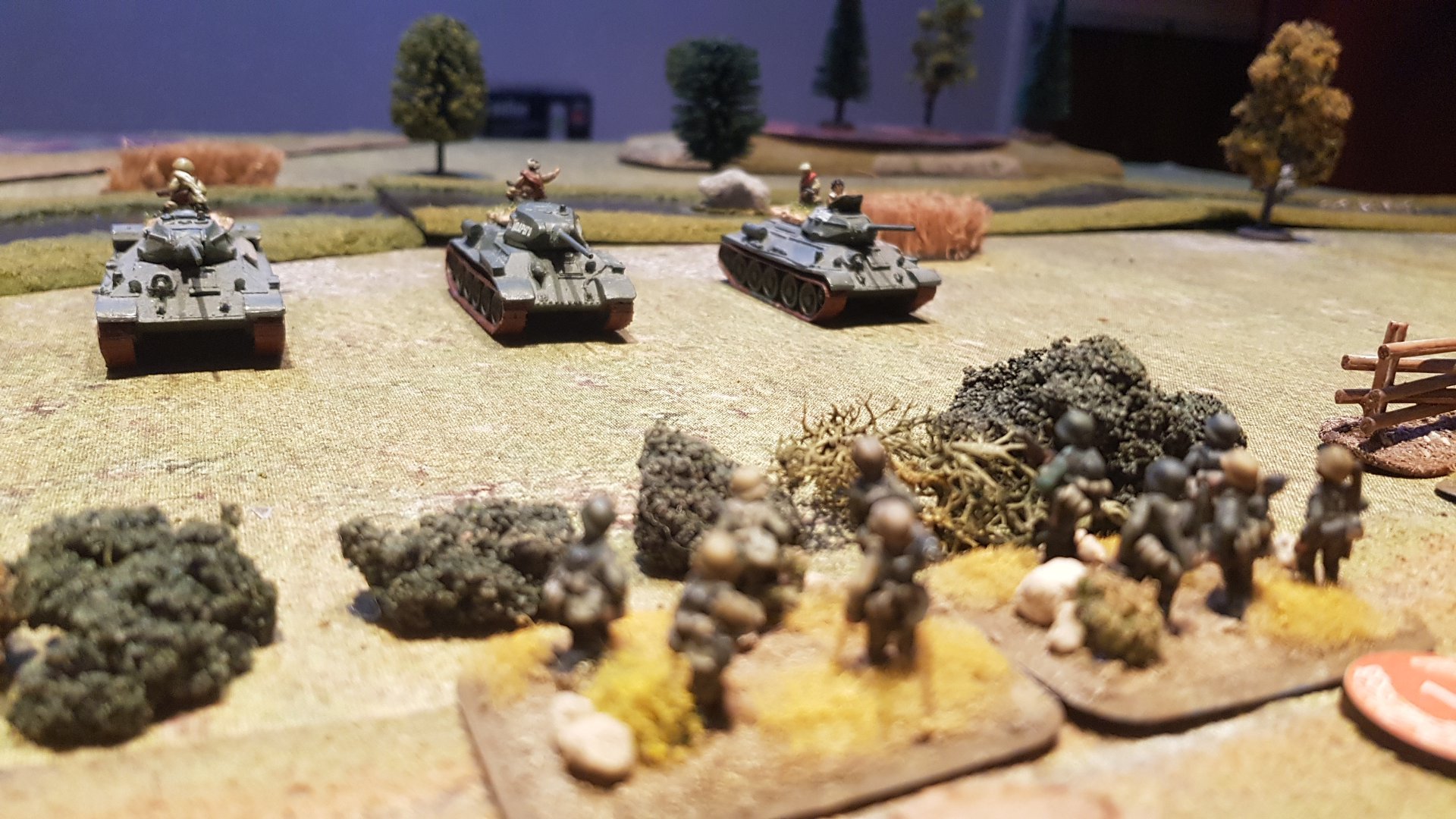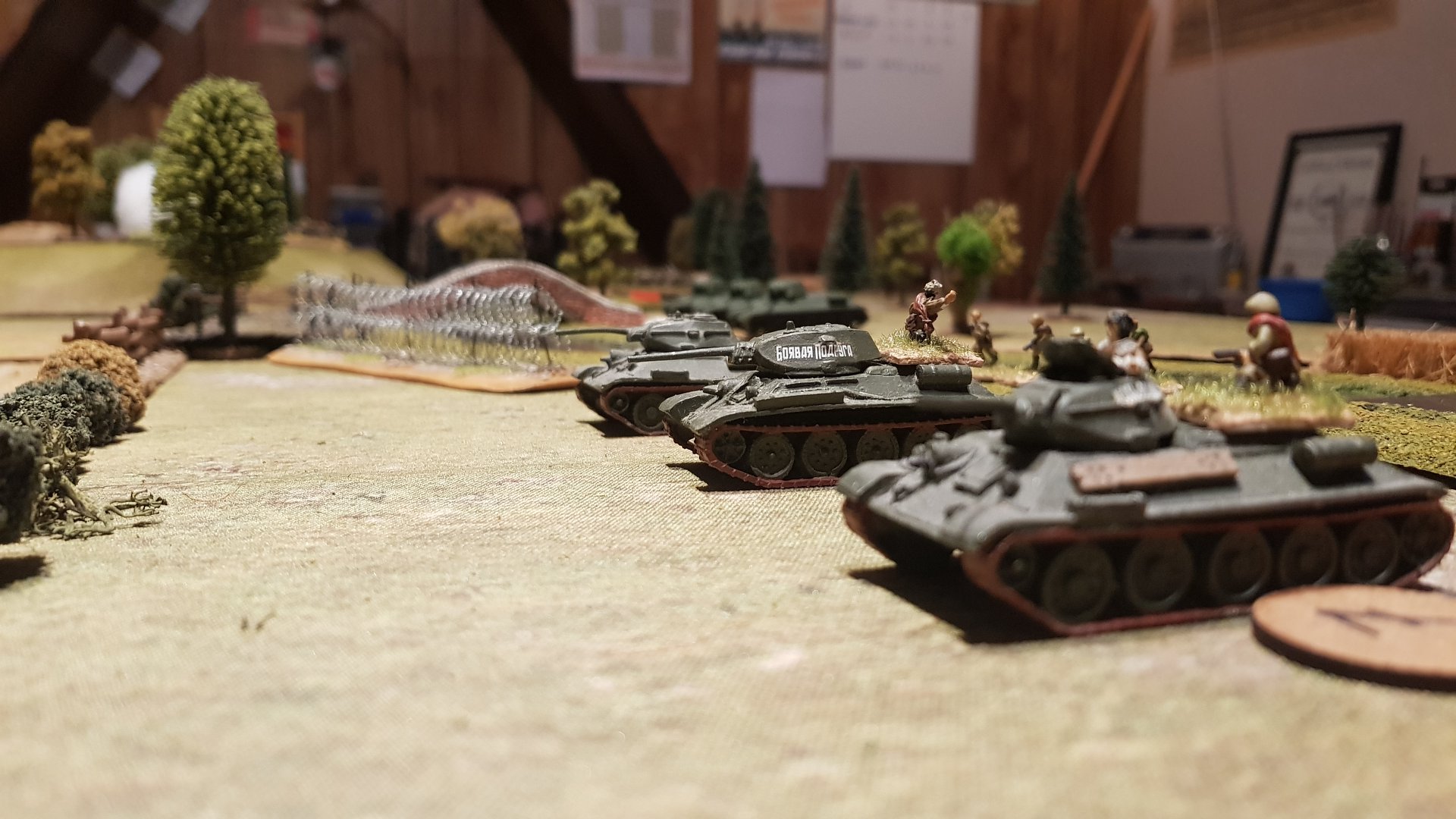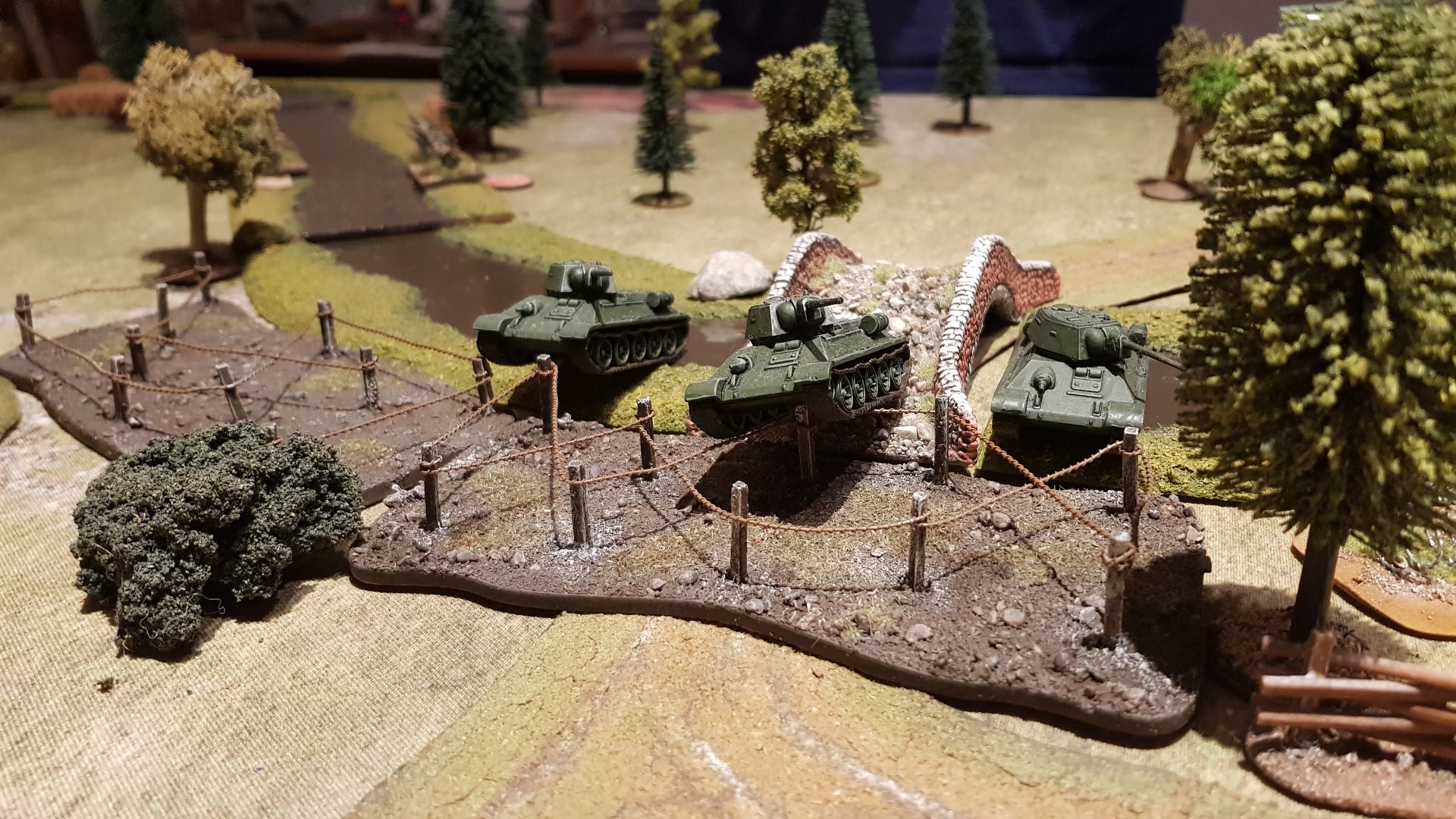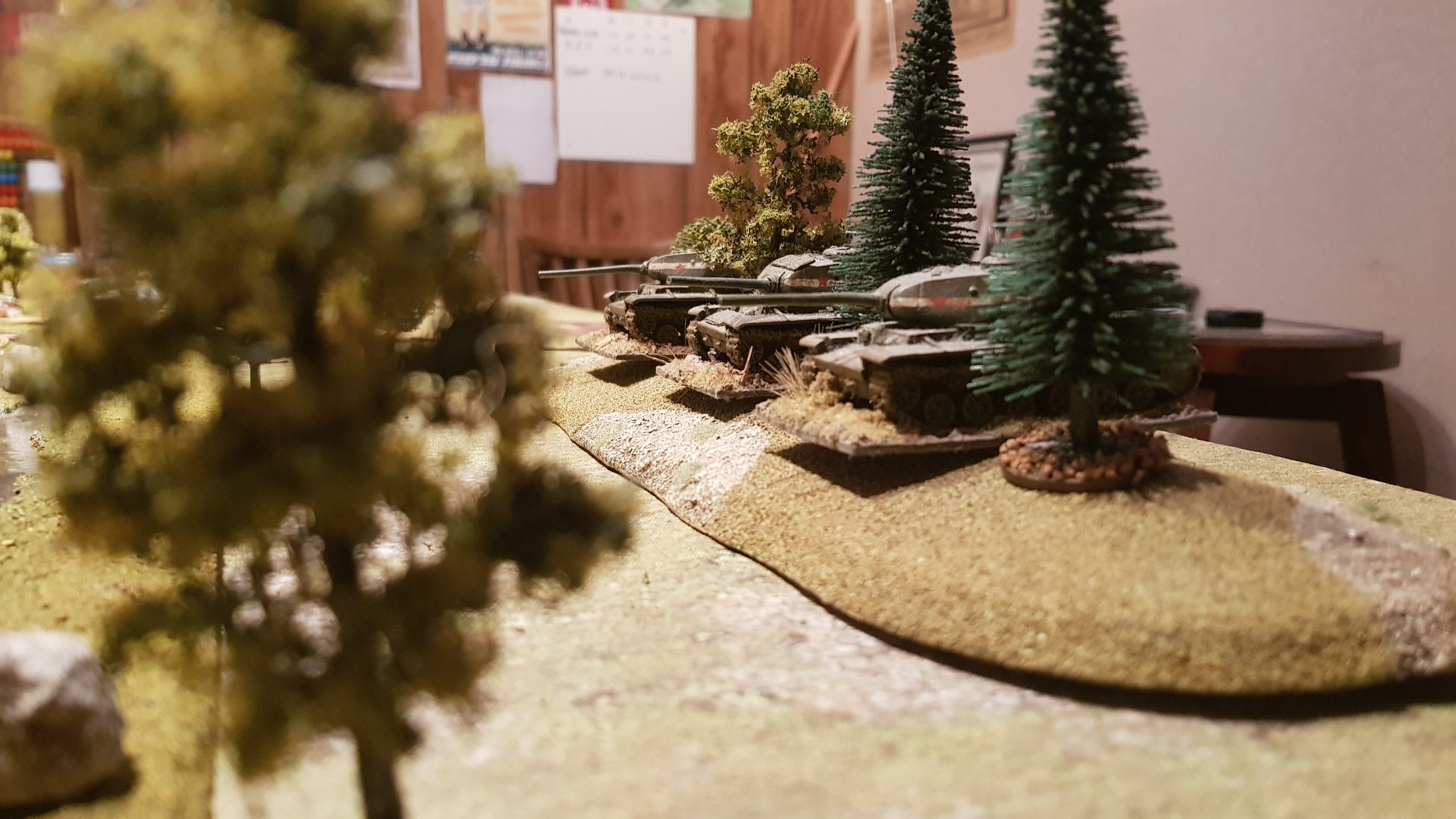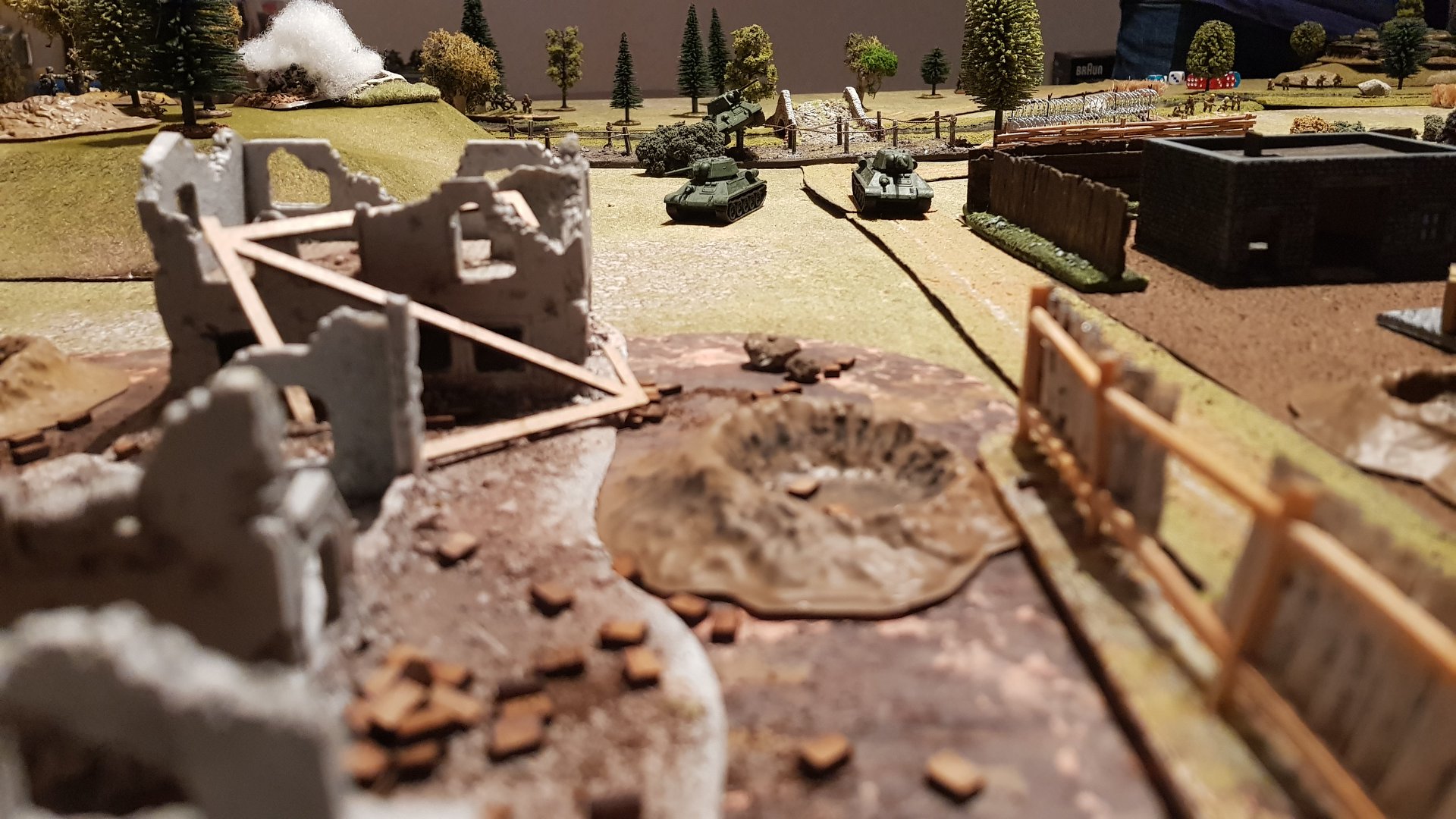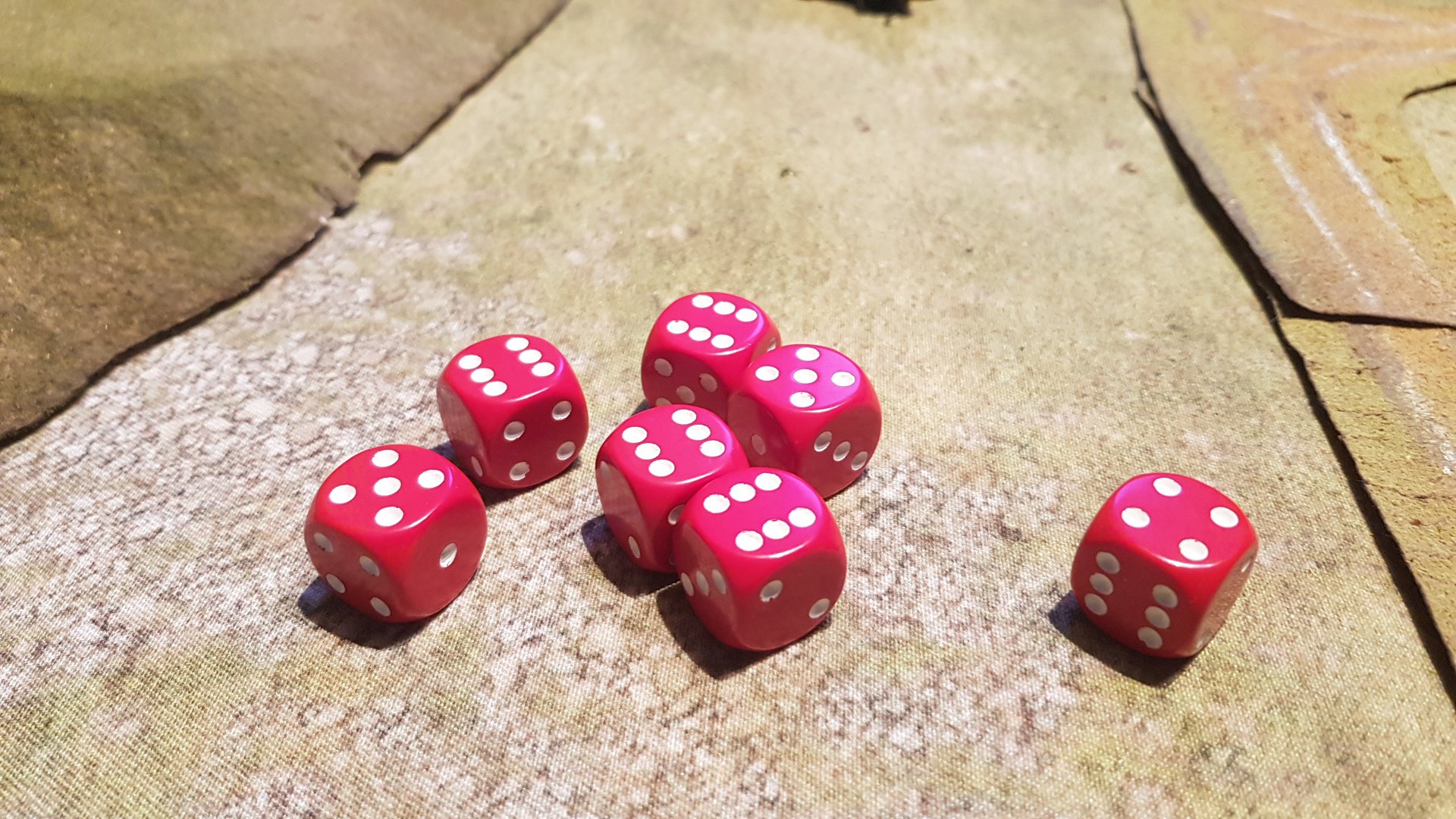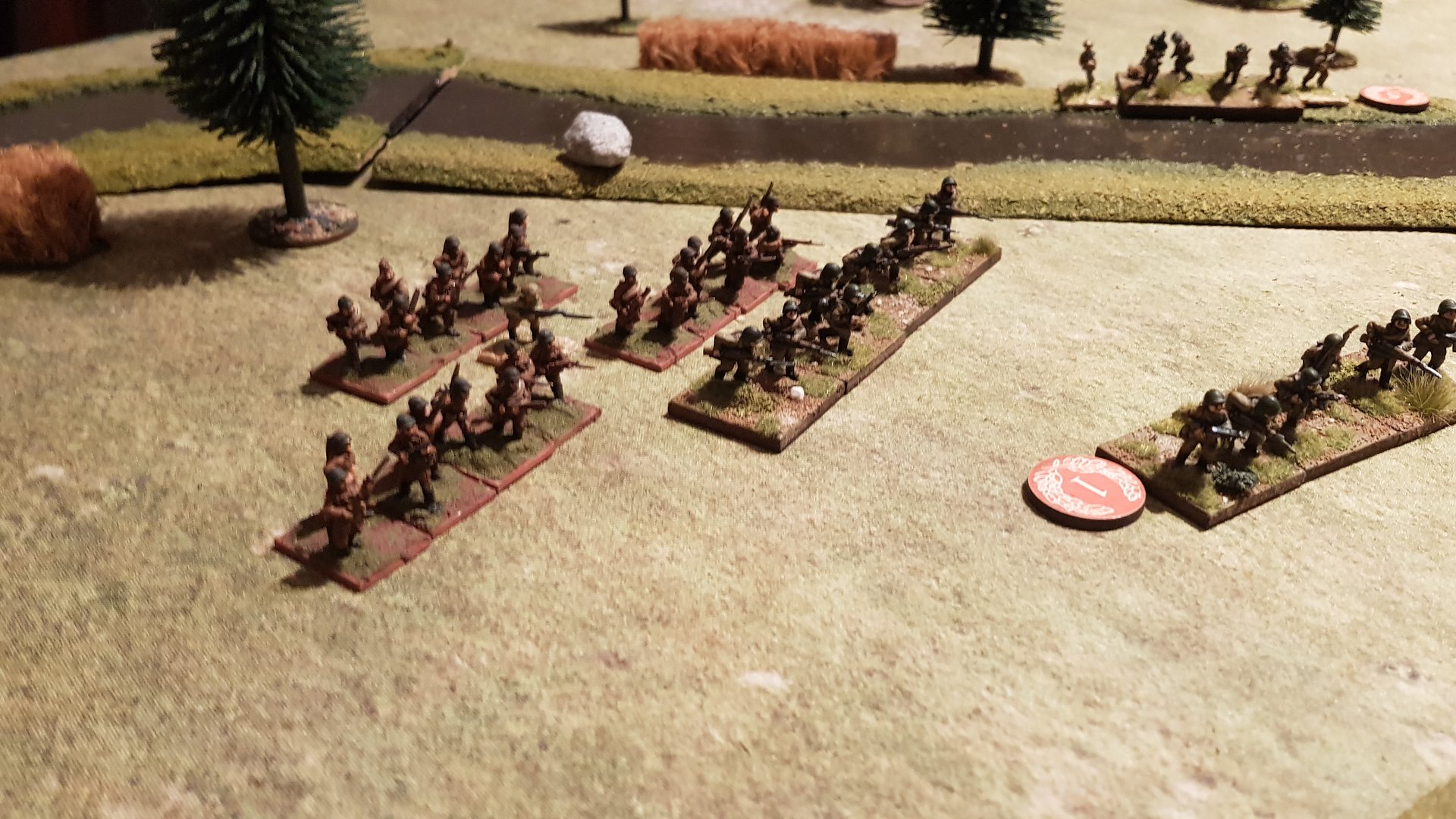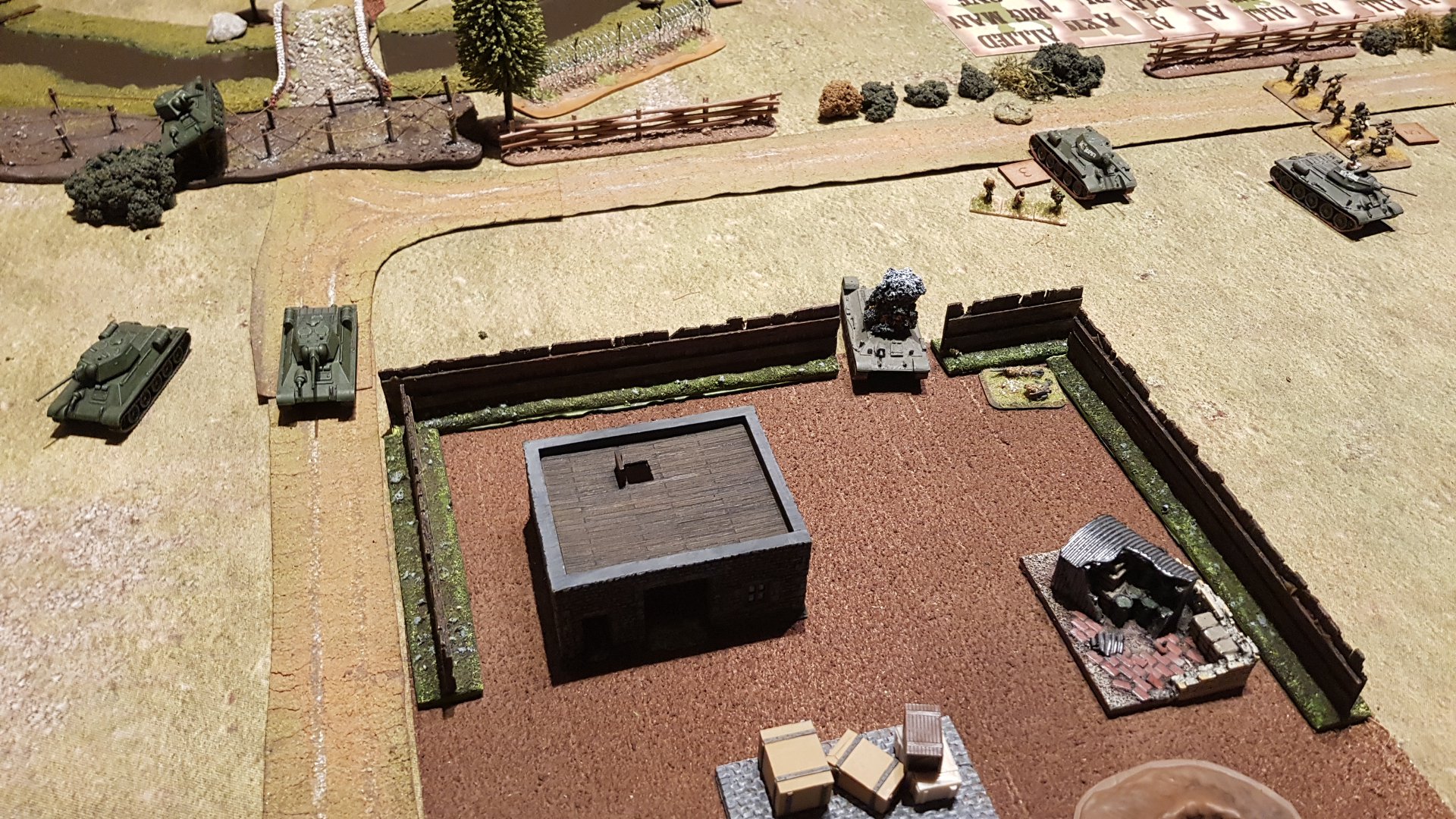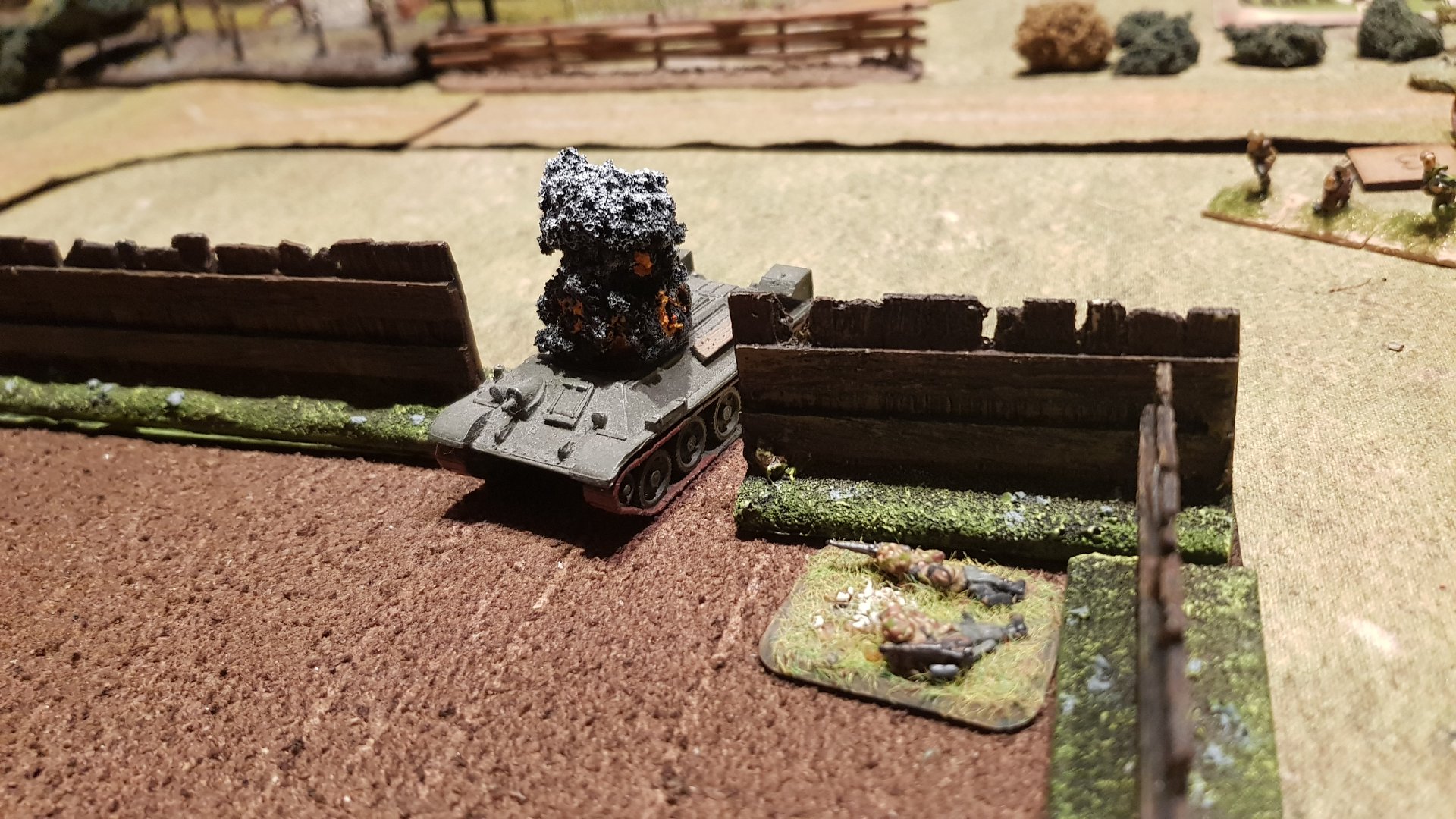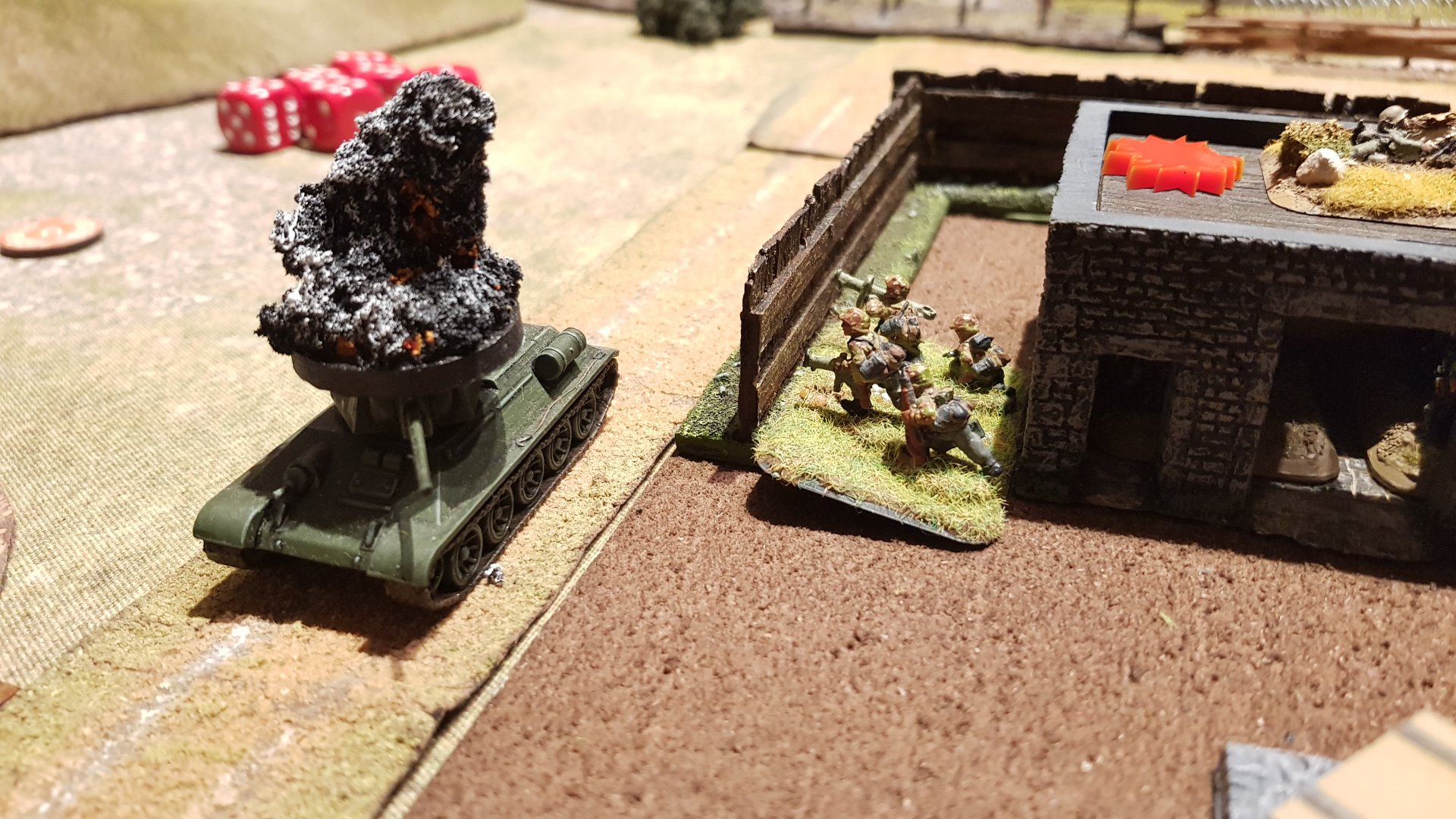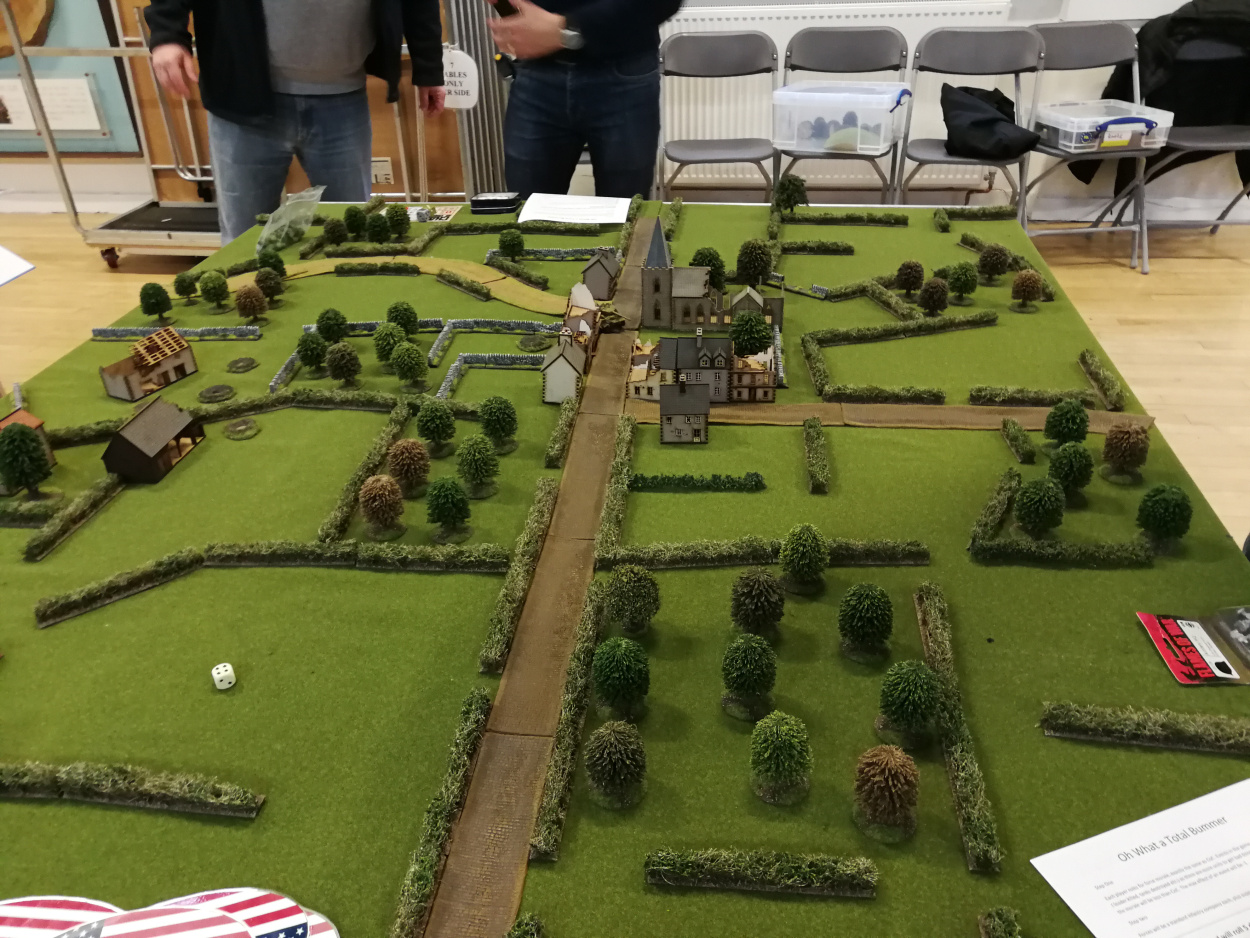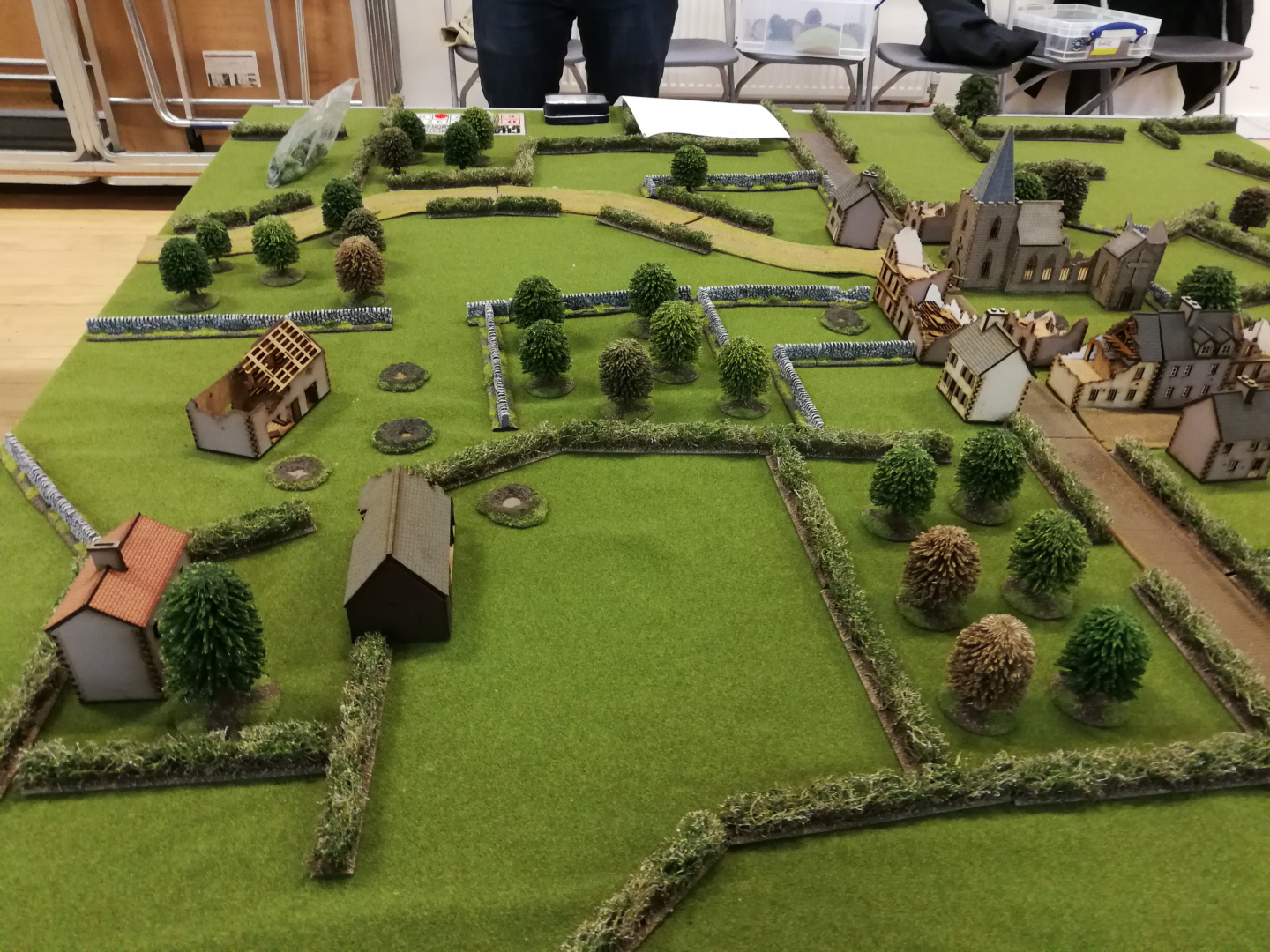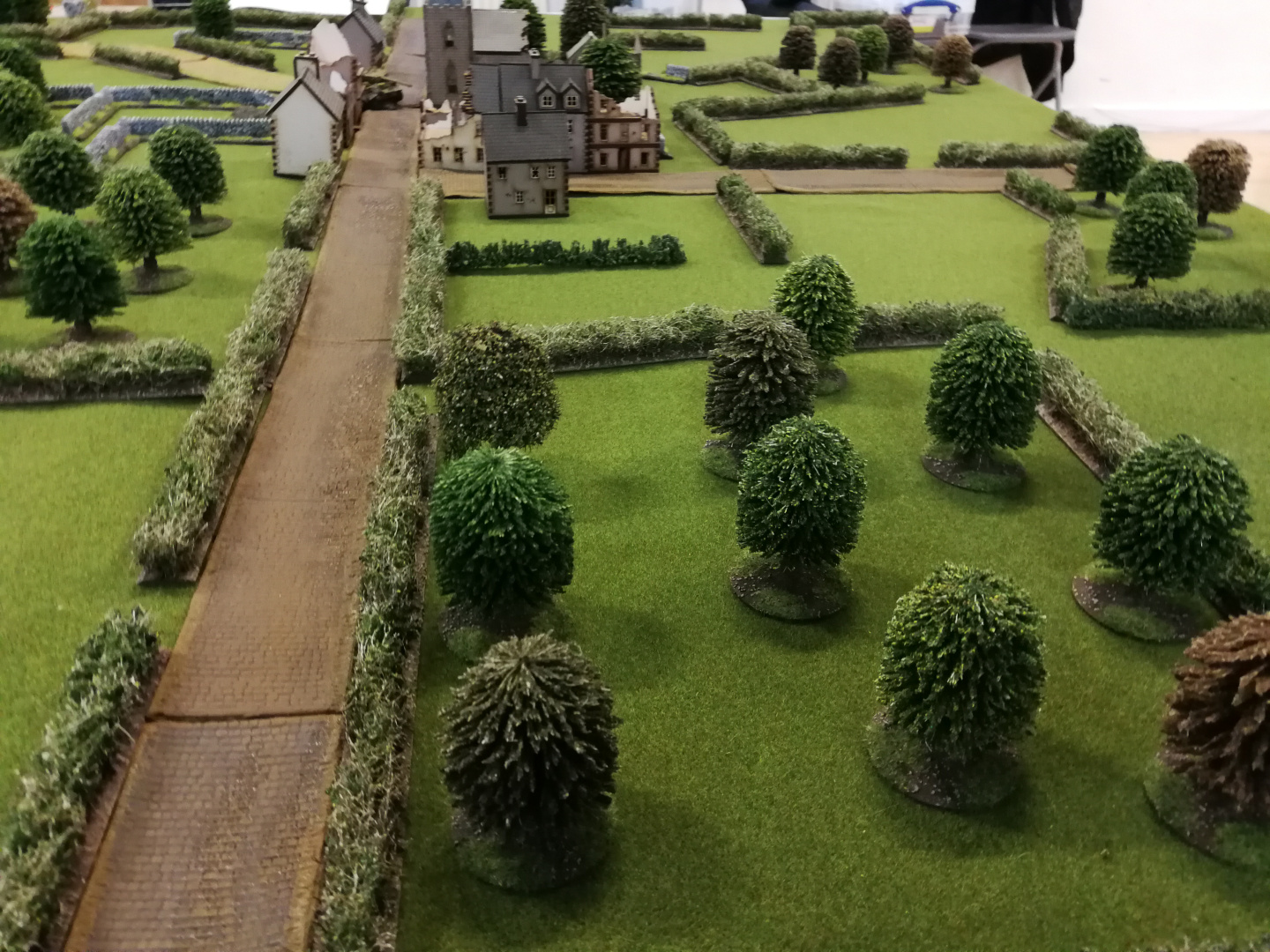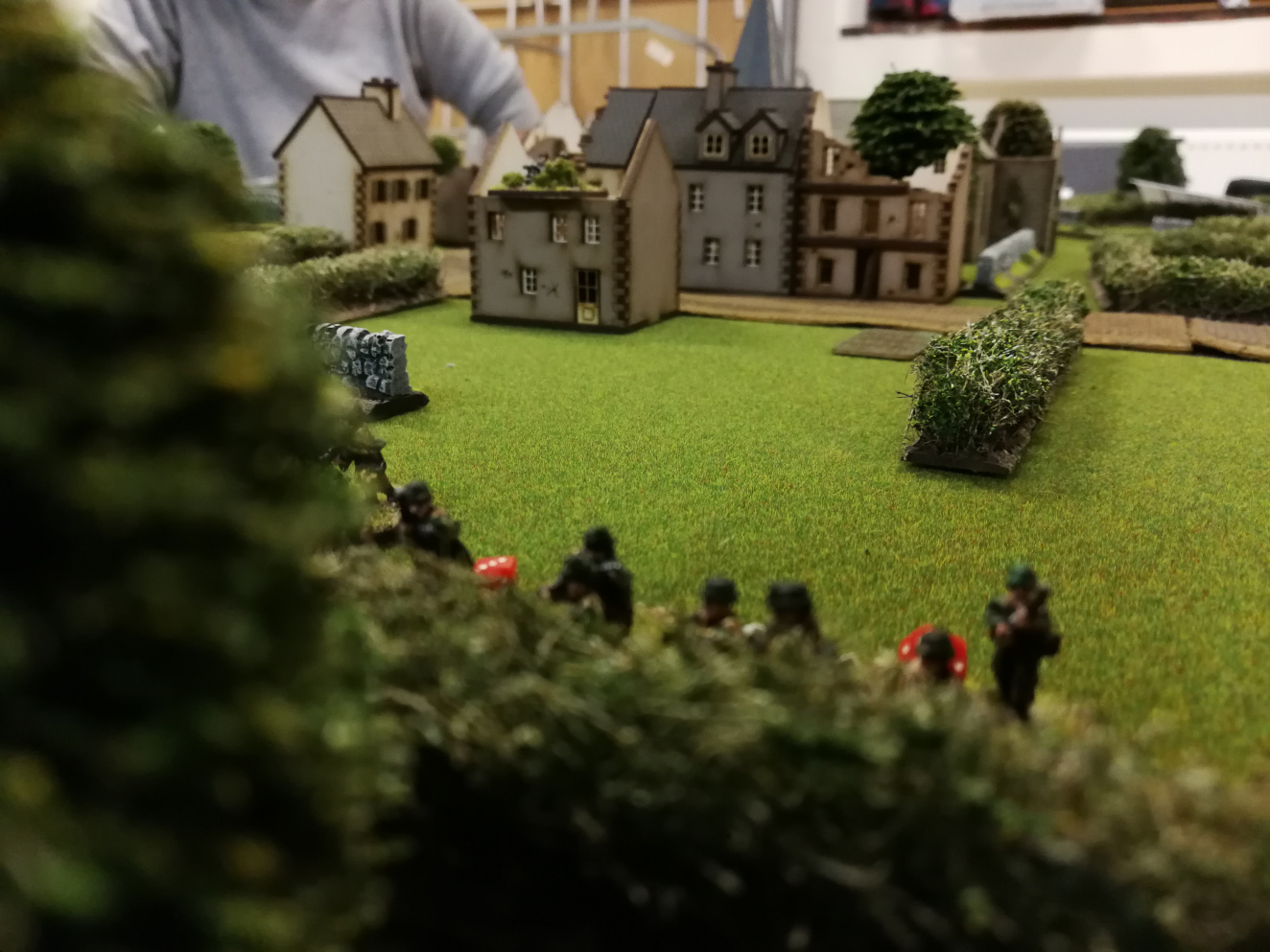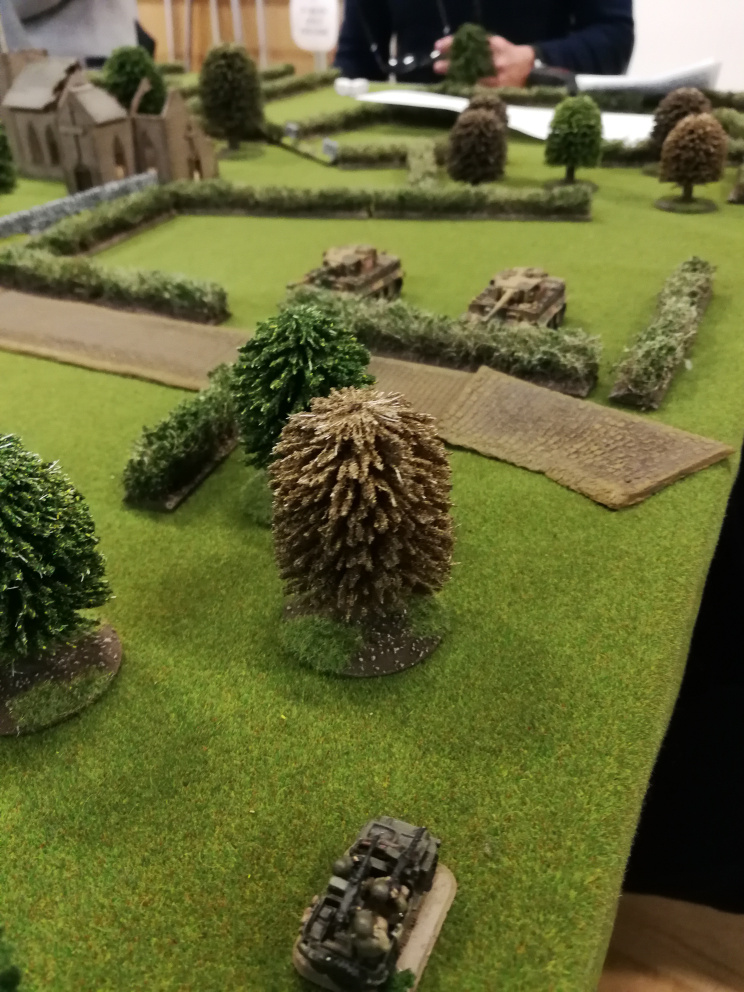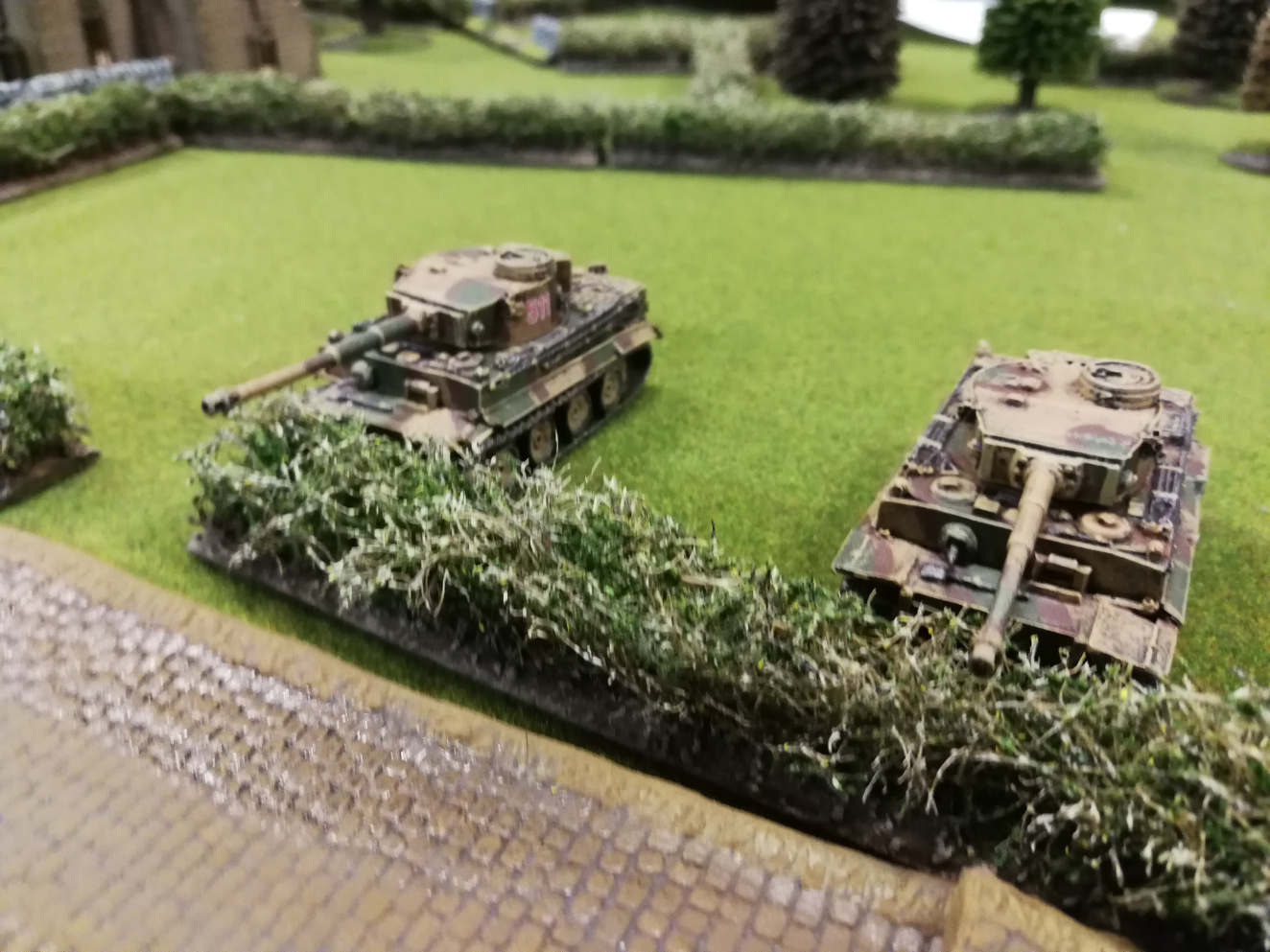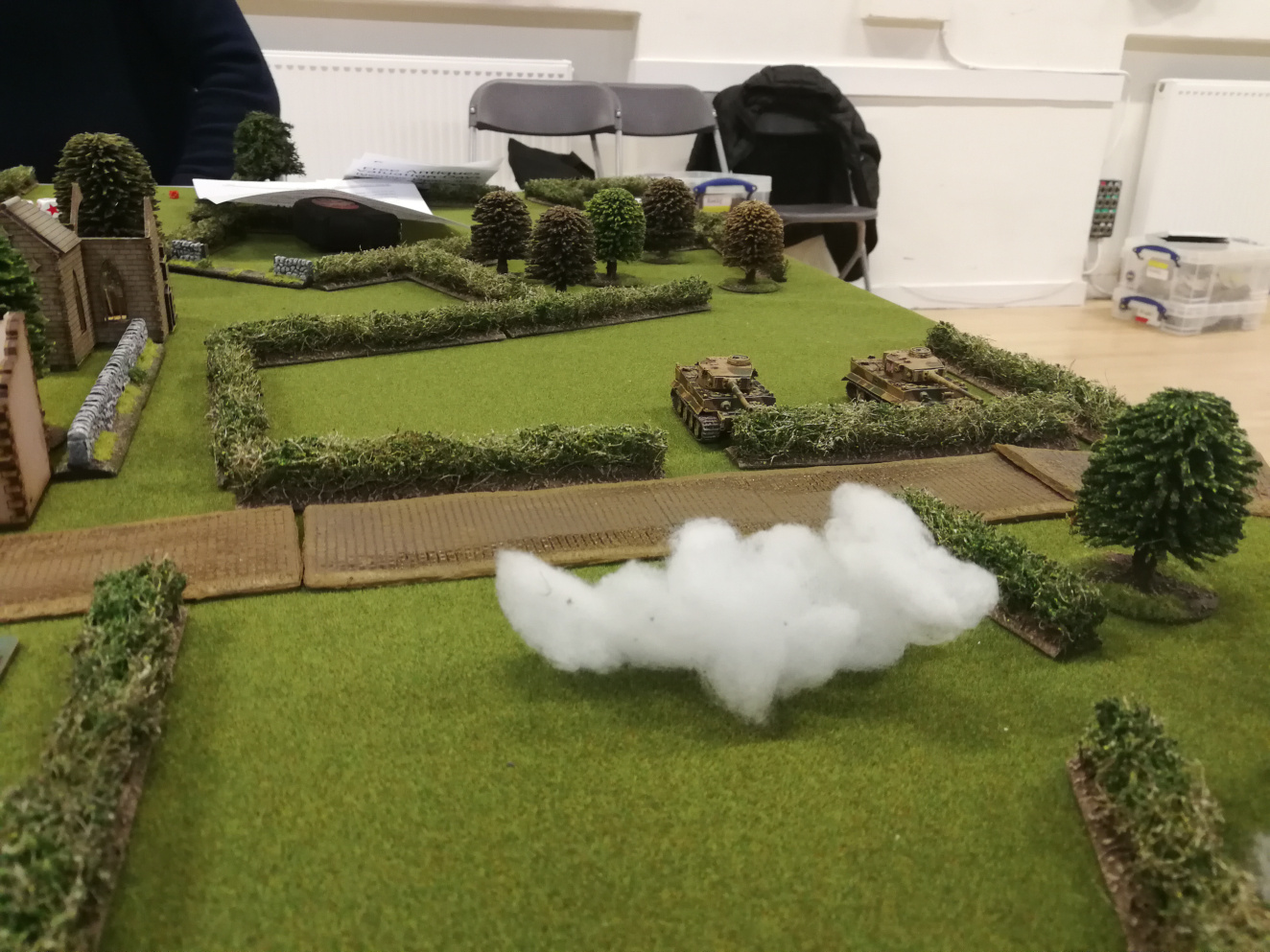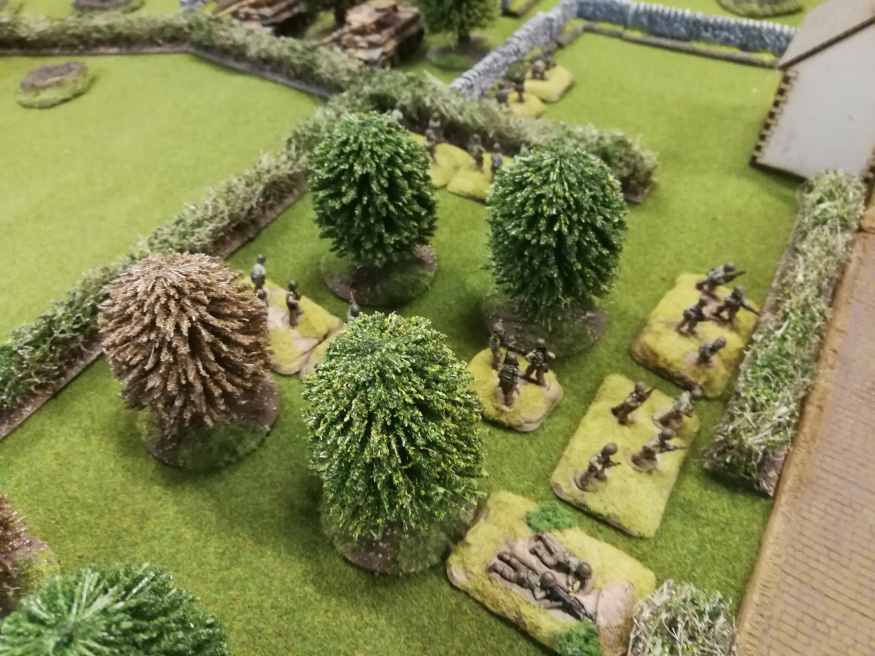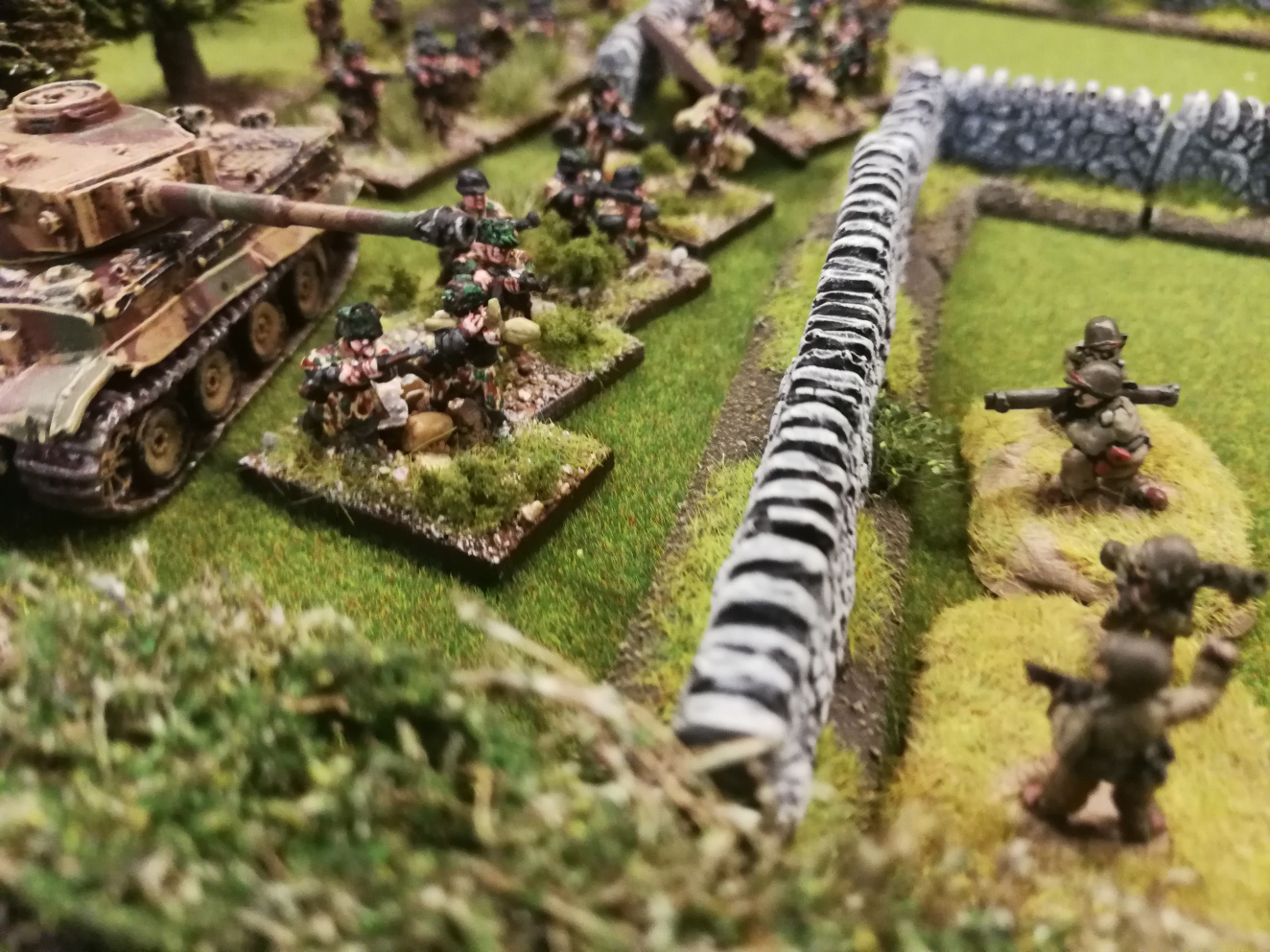This was our first game of I Aint Been Shot, Mum designed to learn the game in preparation for playing a selection of scenarios (and hopefully mini campaigns) from The September War supplement in September because you don't get an 80th anniversary every year!
I'm not entirely new to Lardy games as I have experience with Through the Mud and Blood and I'm quite a fan of Chain of Command but this is my first dabbling with World War II at company level. I've even spent from March to July making two companies specifically for this project!
So with my armies made, a card deck prepared and the rules read over we began.
We picked situation #04 from the randomly generated scenario list in the IABSM v3 rule book, A Hasty Defence, as it seemed somewhat appropriate for the invasion of Poland.
The first few turns went by pretty quickly as everyone advanced under Blinds (and because the deck was only four cards strong at this stage). A few dummy Blinds kept things tense until eventually, and somewhat inevitably, advancing Germans in the corn fields spotted the Polish in their defensive trench.
Thus began a largely fruitless firefight that didn't quite resolve itself even by the end, but kept the participants honest and us entertained at getting to throw dice in anger.
Meanwhile on my right flank a platoon of eager Panzer I tanks found a platoon of TKS tankettes waiting to plug any gap that may appear.
A quick check of the tank rules revealed this was going to be a tough tank battle as everyone was solely armed with MGs. Nevertheless the Germans were so keen that their platoon card managed to come up again before the Polish armour could do anything!
So five minutes later...
The tankettes just about held on as the turns went by but the first volley resulted in SO MUCH Shock I can only assume that it took a moment for the crews to realise that they weren't actually being hurt by the fire. Still, it kept their Big Man occupied sorting them out while they tried to recreate the same terror in the Germans.
While that was going on the centre of the table became the real interest as the main German advance came off their Blinds and started to add fire on the trench and prepared to try and overrun it.
By the time this had started to look particularly threatening to the anchor point of the Polish defence, the first additional platoons began to arrive! Unfortunately they arrived and took quite a bit of fire as they were largely in the open that first turn. This was the point I learned to value keeping an Action back to take cover...
That lesson learnt, I still needed to get my MMG teams on the table. This was also where I learned that it will generally be better to get these teams in somewhere protected early on. Like, say, in a trench the scenario gives you before the game starts, and bring the mobile tanks on later… moving swiftly on!
The game was split quite evenly at this point with a couple of squads per side getting hammered but neither side looking too shaky.
Then the German armour made a bold move. They got some decent draws from the deck, including a bonus move (which we felt was a fair inclusion for this game before we started) and so swung around to lead a charge right into the heart of the Polish defence while their armoured counterparts tried to deal with their remaining Shock.
It was probably due to thinking that the Panzer I could stand up to more damage than it actually can but they charged hard straight into the middle of the Polish back line. Fortunately for the Polish defenders they had two AT rifles and three deployed MMGs ready!
From here the command tank was completely destroyed from a head-on shot, another had its weapons destroyed by the second AT rifle, and the MMGs had mixed results that also resulted in two further tanks’ weapons destroyed!
From here with the prospect of assaulting a position still so manned and time pressing on, my German opponent decided to call it and fall back.
Overall we were both pretty happy with the game and results and hope to get another game or two in before the September anniversary begins.
John Cooper
Postscript
Here are some other pictures of my Polish forces for “The September War”, all in 10mm:
























